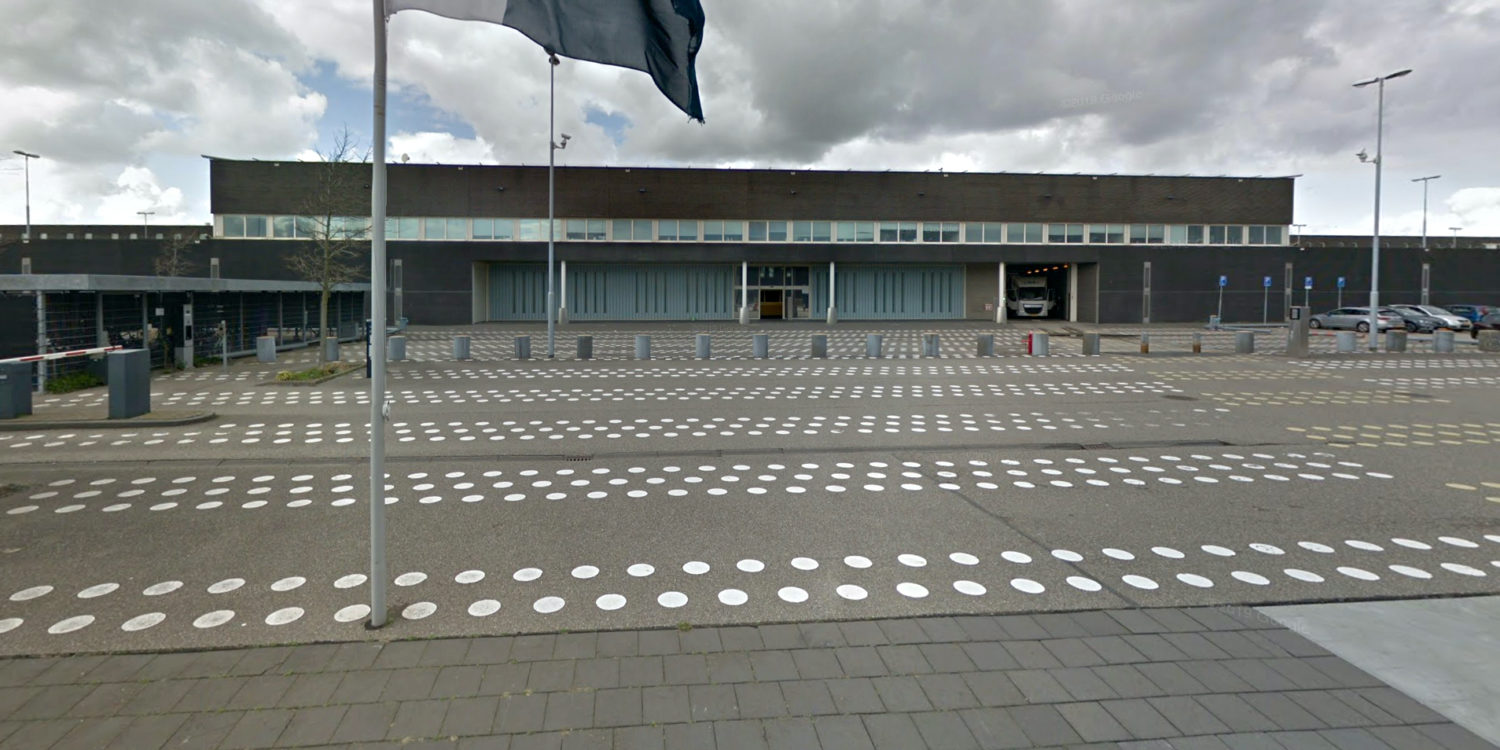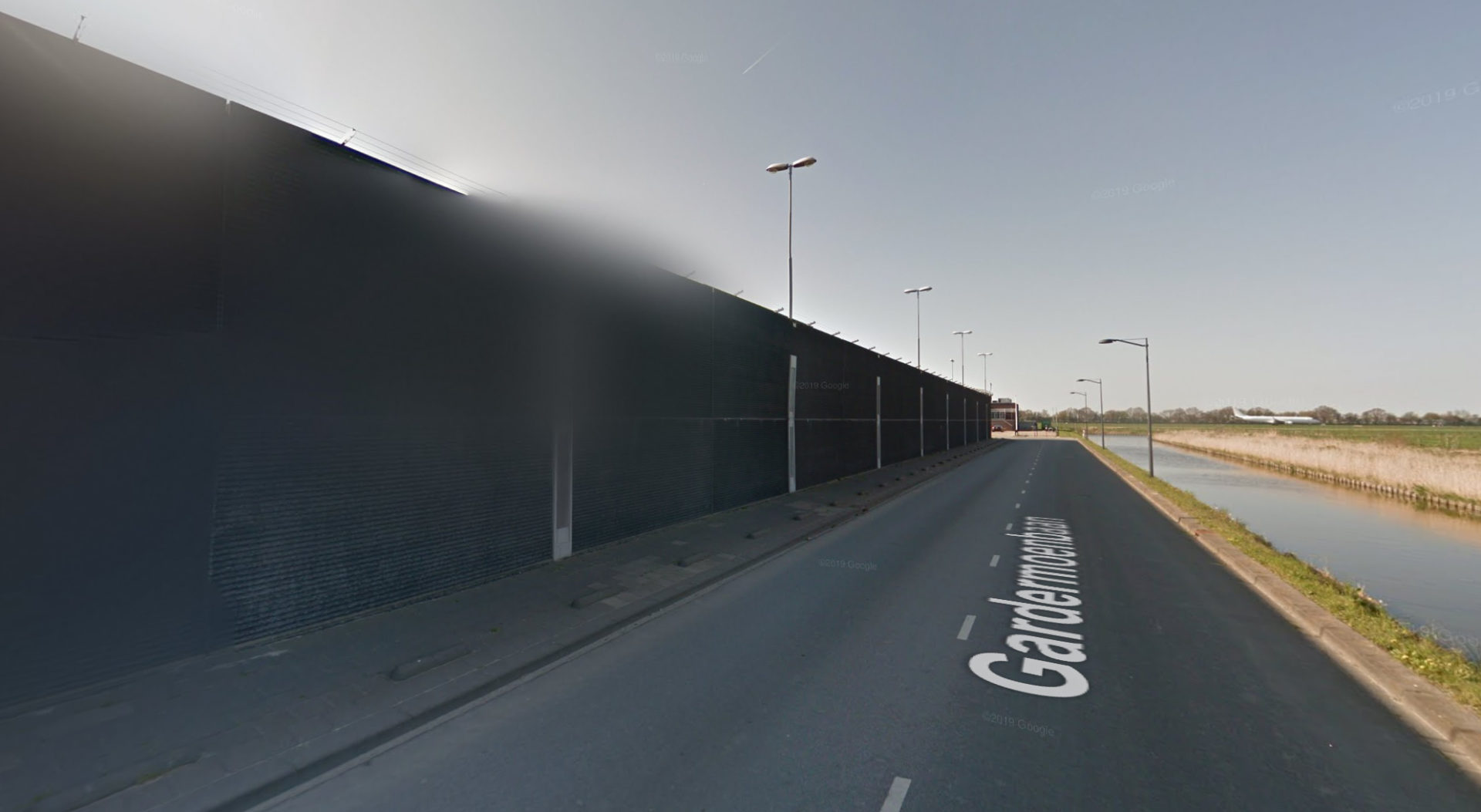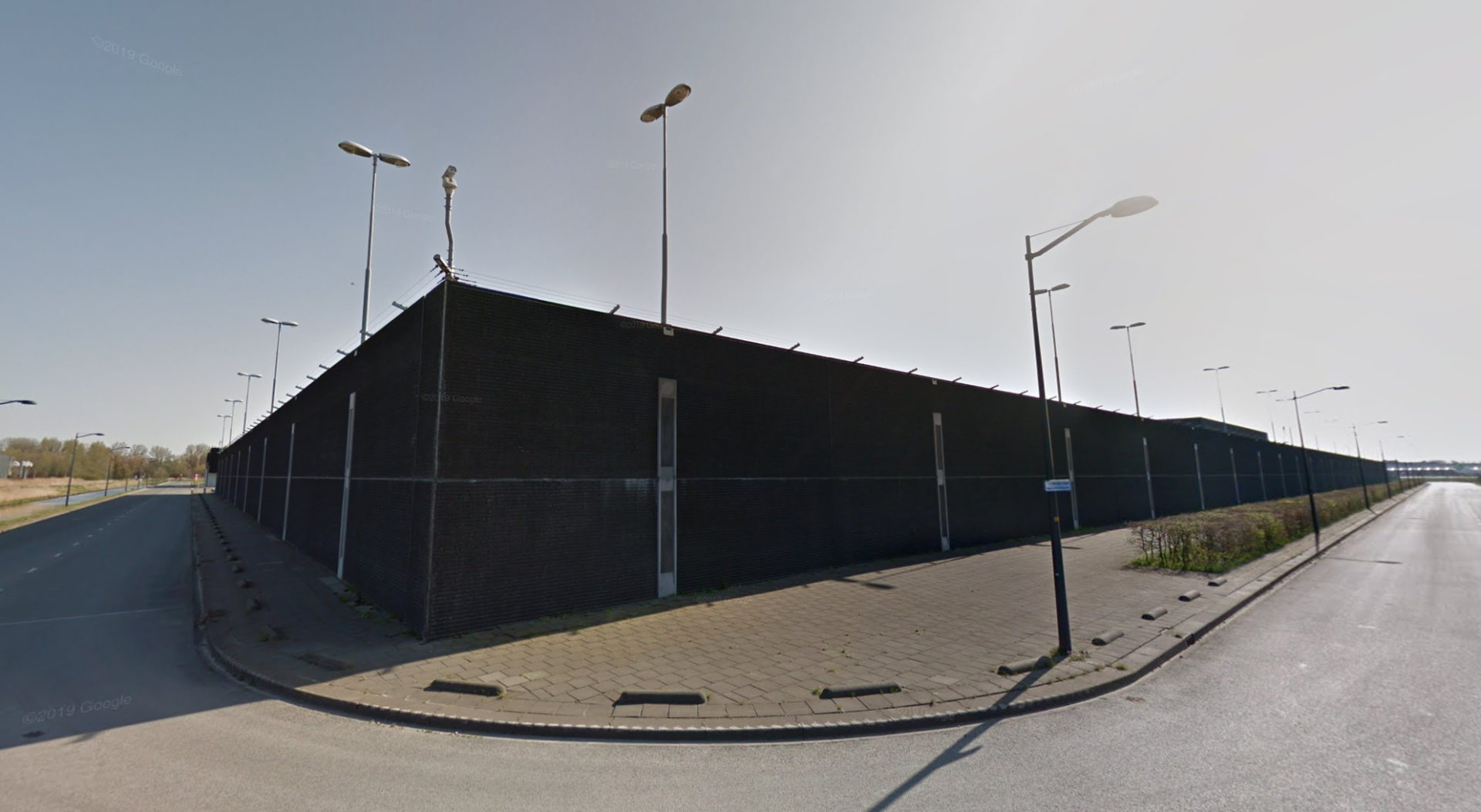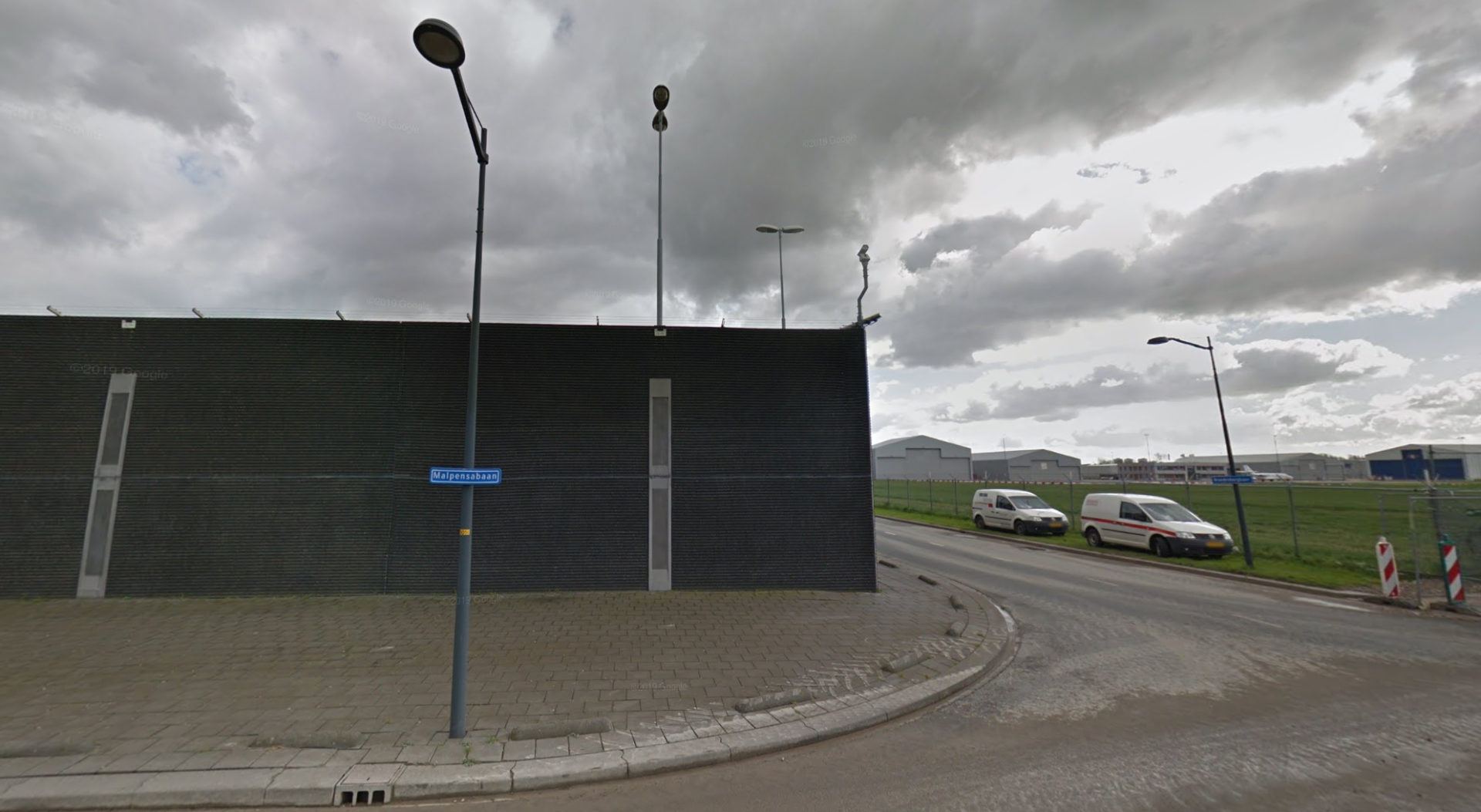In the autumn of 2020, the New York chapter of the American Institute of Architects (AIANY) called on all its members to stop being involved in the design of criminal justice facilities. Not long before, The Funambulist started a new campaign demanding architectural workers to “pledge to never participate in the design of spaces of detention”. Both calls are the result of a growing movement in architecture and design that acknowledges the responsibility of these fields in the construction of the carceral archipelago, and seeks to prevent architects, designers and engineers from realising future projects within this extensive system of prisons and related institutions. While these developments are major steps forward for a more ethical architectural practice today and in the future, assessing the lasting consequences of past projects should not be forgotten. Existing carceral institutions continue to impact people’s lives today, and should therefore all be critically reviewed by the architects involved and the field at large. One particular, seemingly ordinary prison which has drastically shaped the lives of thousands of people over the last decade is the Detention Center Rotterdam. It was the first in a series of new border prisons built from 2010 onwards, and the first prison in the Netherlands built as a public-private partnership. Architectural media gave it very little attention at the time, with barely any discussion on the consequences and ethics of making such an architectural project happen.
With the rise of the Dutch populist and extreme right in the early 2000s, a xenophobic and anti-immigrant sentiment gained a considerable foothold in national politics. It was in this context that the subsequent government ministers in charge of migration issues intensified their efforts. It started with their attempts to limit the number of newcomers and increase the strictness of governmental agencies responsible for processing asylum applications. At the same time a number of ‘bajesboten’ were brought into use, which are a kind of temporary, floating detention facility designed to detain and ultimately expel people without the ‘right’ papers. These ‘prison boats’ were to be replaced by a number of permanent border prisons meant to be realised, maintained and operated through a partnership between the responsible governmental agencies and the private sector. In early 2008, a consortium called DC-16, consisting of architecture firm EGM, construction companies Ballast Nedam and Strukton, service provider ISS and consultants Smits van Burgst, won the tender for a new detention center at Rotterdam-The Hague Airport, right off the airport’s tarmac.
When the construction of the new detention center was announced, social movements actively involved in migrant support and the struggle against forced deportations immediately started a campaign. The movements’ activists argued that those involved in the design and construction of the facility would be complicit in the large scale detention and deportation of foreign nationals, and kickstarted a series of actions aimed at slowing down and ultimately stopping the center’s construction. When one group started to inform the wider public and organised a theatrical ‘die-in’ in front of EGM’s office, Archined’s Piet Vollaard wrote that “it’s a good thing that employees of EGM are forced to think about the ethics of their profession”, but also that “if the conditions for detainees are improved considerably there are more arguments for than against EGM’s involvement”. Later, others set fire to parts of the construction site and besmirched one of the architects’ home and car with red paint. EGM declared that “it is inappropriate to hold individuals accountable for the implementation of governmental policies” and the former director of the BNA (the trade association of Dutch architecture firms) wrote an angry letter, but there was no further debate on the role of design and engineering firms in such projects. The construction of the detention center went ahead as planned.
The enormous prison complex finally opened in 2010, featuring 320 cells for a maximum of 576 detainees, housed in a couple of buildings surrounded by a high, nondescript anti-graffiti wall. While the architects and construction companies never published (or preemptively deleted) any information on the detention center’s design, it is still possible to get an idea of what the inside must be like by looking at the center’s promotional material, its insightful Instagram-account, feel-good documentaries on public television and, awkwardly, the website of the firm overseeing the installation of various site-specific art works in the center. For an outsider trying to make sense of what the Detention Center Rotterdam is all about, it can, like the center’s facade and the covers of the ministry’s annual reports, come across as pragmatic, efficient and matter-of-factly. In one employee’s Insta-post the function of the center is described as an almost inevitable process: “People who come here have not committed a criminal offence, they are simply here to return to their country of origin.” While this sounds almost compassionate, the reality is that the Detention Center Rotterdam has been built as a central node in a system that is designed to forcefully deport thousands of individuals on a yearly basis.
Anyone whose asylum application is rejected or any racially profiled person failing to produce a valid ID upon request of the police can be detained in a ‘foreign detention’ facility like the one in Rotterdam. At the center, various governmental agencies work together to arrange the detainee’s forced return to their country of origin. Being detained and suddenly confronted with the possibility of a forced expulsion is an incredibly stressful and often outright traumatising situation. For some, this happens soon after life-threatening journeys past hostile borders and dangerous sea crossings, hoping to find refuge. For those already residing in the Netherlands, it means the sudden disruption of their existence, and the permanent separation from family and friends. When all the bureaucracy has been sorted, the deportation will be carried out on either an arranged charter flight in collaboration with other European countries, or on a regular scheduled flight accompanied by military police. While officially no deportations to “unsafe countries” are being planned, the list of tragic stories about deportations from Rotterdam directly compromising someone’s health or safety is long. Among many others, Ali-Mohammed al-Showaikh was immediately detained for life without due process upon arrival in Bahrain, Louay Al-Zekra was deported to Lebanon while still being prosecuted for his sexual orientation, and, despite explicit warnings by Amnesty International, Ezzedine Mehimmed was expelled to Sudan. His friends still fear for his life today.
Many others at the Detention Center Rotterdam wait endlessly for a deportation that never comes. For example, when government officials don’t manage to sort out all the bureaucracy or when the country of origin refuses to accept a deportation, the detainee is released after 18 months along with a request to leave the Netherlands on their own. They are forced to live in illegality and in many cases end up in foreign detention again, for example when arrested for sleeping outside. Amnesty International has reported that many went through three, four or more cycles of foreign detention without having committed any crime. All these policies and mechanisms constitute a system in which the Detention Center Rotterdam is a central node, functioning as an oppressive machine that puts people in danger, disrupts lives and families and creates an incredible amount of psychological stress and trauma. Besides having such violent mechanisms carried out on a daily basis, the center has over the last ten years regularly made headlines with stories giving a glimpse of how the normalisation of such violence can easily lead to all kinds of horrific excesses. In 2013, a group of 60 desperate detainees saw no other option than to start a hunger strike. Later that year, after he was mistakenly registered as ‘deportable’, Russian refugee Aleksandr Dolmatov took his own life. More recently, a South-African man also died by suicide on the morning of his deportation. Last year, four guards were suspended for ‘extreme violence’ against a detainee. According to many organisations, punishing and intimidating detainees by putting them in isolation is also common practice, despite the grave consequences.
This border system is implemented by a wide array of governmental agencies under the responsibility of a democratically elected government. While supposedly democratic institutions are clearly not a guarantee to prevent the systemic normalisation of violence nor any excesses, it should also be acknowledged that this system would not have been able to function without architecture and its willing architects. Apart from being a well-regarded profession associated with creativity, modernity and progress, architecture is at its core the application of a set of technologies (doors, walls, roofs, locks) allowing those in power to sanction the organisation of bodies in space. While this is the case for all forms of architecture, the Detention Center Rotterdam makes it quite explicit in the short description of the facility on their website: “In the Detention Center Rotterdam foreign nationals [..] are being kept available for expulsion”. In other words, the high concrete walls, sliding doors, courtyards, hallways, access systems and isolation cells have been arranged in such a way that the authorities can easily store humans — or from the perspective of the system, unwanted bodies — in this location until they are deported. The way this architectural arrangement has been situated, practically adjacent to and with some cells overlooking the airport’s tarmac, adds to both the efficiency as well as the psychological impact on the detainees: the next plane can be yours.
The Detention Center Rotterdam, and the larger deportation machine it is part of, did not appear out of thin air. It was commissioned, designed and constructed. The entire DC-16 consortium, from EGM architects to the various construction firms, have a particular responsibility. Without them, the materialisation of the building could not have happened and the intensification of the violent process of forced expulsions would have been disrupted. What makes things worse, is that all these firms knew from the very beginning what they signed up for. In the years running up to the tender process, foreign detention and all its implications were constantly in the news, in particular the various controversies around the bajesboten or the 2005 Schiphol Fire which took the lives of 11 refugees. Also, activists warned all participating teams already in the first stage of the tender about the nature of the project and the inevitable impact on people’s lives. Still, the consortium’s companies took a very clear and conscious decision to press ahead, and in so doing accepted the likely consequences their involvement would have. These companies were indeed, as EGM architects stated ten years ago, “implementing governmental policies”, but if these policies entail the violent treatment of humans who have sought refuge in the territory said government controls, architects and engineers should at all times maintain their own ethical standards. In this case, that would hopefully be to refrain from any form of collaboration.
Holding EGM architects, Ballast Nedam, Strukton, ISS and Smits van Burgst accountable for their complicity won’t undo the construction of the Detention Center Rotterdam nor will it compensate for the endless suffering that it has facilitated. Still, it needs to be done as otherwise such companies are likely to engage in carceral projects again. Rather than engaging in debates about how their involvement might have improved conditions for detainees or how someone else might have done it instead, the focus should be on concrete actions these companies, and by extension all others in the broad field of architecture, can take right now. First of all, architects should support and amplify the ideas, proposals, and actions by movements calling for an end to the deportation machinery and organisations criticising its mechanisms. In particular architecture and design’s growing prison abolition movement needs to be sustained and expanded. For EGM architects, this means to immediately pull out of their involvement in the realisation of a prison village in Brussels and borough-based jails in New York. Secondly, the responsible firms need to work towards reparative justice, which should directly involve survivors and their organisations and give them a voice in how reparations can be initiated. Finally, the responsible firms, and all others in the field, need to collaborate in reshaping how the field is organised, in the Netherlands and elsewhere. A new architects’ union or reorganised BNA could play an important role in helping to change the terms of problematic commissions or even stopping them when necessary, and make sure no firm, big or small, will collaborate in the construction of oppression.




